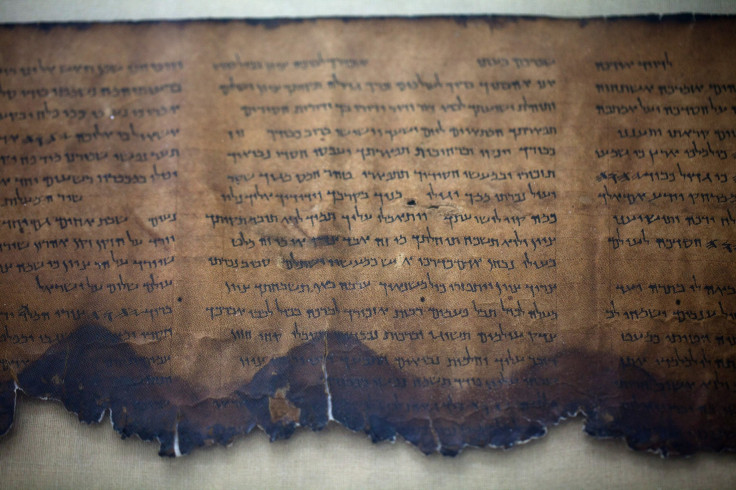Scientists Decode Dead Sea Scroll Mystery, Revealing Secret Ancient Jewish Calendar

Researchers solved the mystery of one of the Dead Sea Scrolls that had been broken into dozens of tiny pieces, putting them together to reveal a coded message about an ancient Jewish sect’s calendar.
The document is one of the last two of the roughly 900 Dead Sea Scrolls — also known as the Qumran Scrolls for the area in the West Bank where they were discovered — that had yet to be deciphered and published. According to the University of Haifa, the new findings offer insight into the fanatical Qumran sect’s 364-day calendar. The scroll that was pieced together uses the name the sect gave to the “special days marking the transitions between the four seasons,” a name that experts had never before seen.
That name is “Tekufah,” which translates to “period.”
“The researchers are now turning their attention to the last remaining scroll that has yet to be deciphered,” the university said.
An ancient calendar may not sound important but it was a controversial subject at the time, the Second Temple period in Israel. Judaism follows the lunar calendar but, as the university explains, that requires a more hands-on approach than the static 364-day calendar to determine when days, months and years fall — observing the stars and the moon. The desert Qumran sect, which referred to itself by the word for “together,” Yahad, thought their calendar was more perfect and holy, with special occasions always falling on the same day.
The deciphered scroll also reveals that the leader who wrote the coded information left out some other special days and another writer went back and corrected the work on the calendar, adding in dates in the margins.
Writing a calendar in code was not meant to hide the dates: “The custom was intended to show that the author was familiar with the code, while others were not,” the university said.
The Dead Sea Scrolls were found in several Qumran caves in the 1940s and 1950s. They include books from the Hebrew Bible and other religious documents. The scrolls were written between the third century BCE and the first century CE in Hebrew, Aramaic and Greek.
Additional scrolls from before and after that period have also been found in the area.
© Copyright IBTimes 2025. All rights reserved.





















